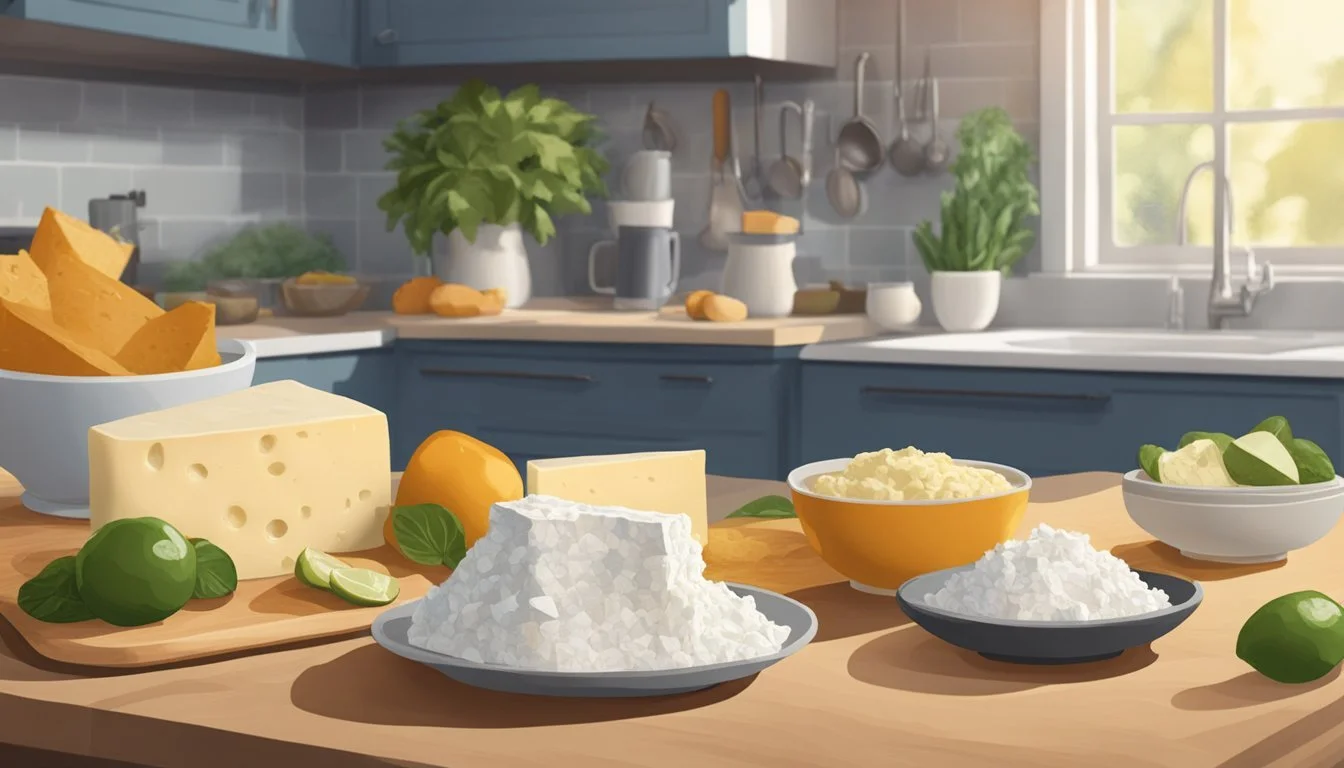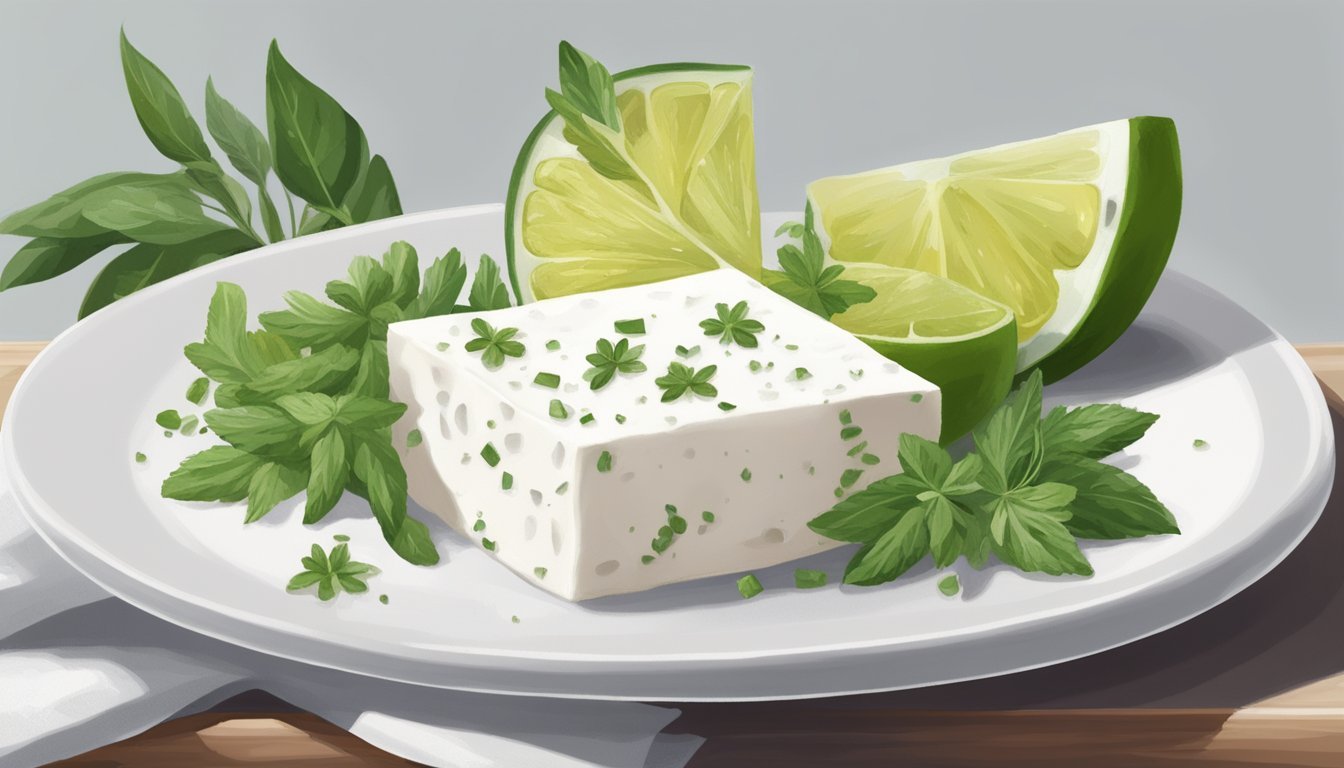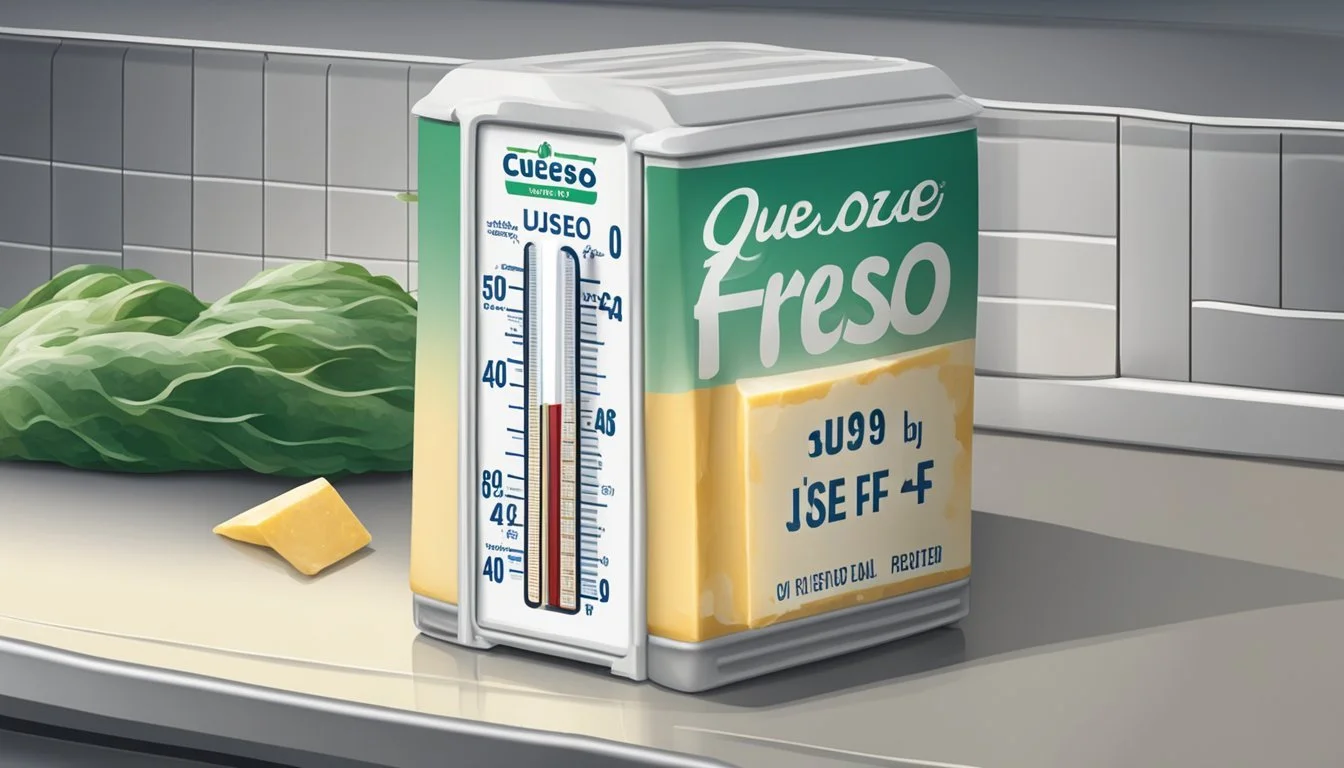Does Queso Fresco Spoil?
Key Facts and Shelf Life Explained
Queso fresco, a popular type of fresh cheese, is beloved for its mild flavor and soft texture. Yet, like all dairy products, it does have a finite shelf life. Queso fresco can spoil, and it's essential to recognize the signs of deterioration to avoid consuming bad cheese.
Signs that queso fresco has spoiled include the development of mold, which may appear as small white or green spots. Another indicator is a sour smell reminiscent of bad milk, alongside any mustiness. These are clear warnings that the cheese is no longer safe to eat.
Proper storage of queso fresco can help extend its freshness. The cheese should be kept in the refrigerator and consumed within a few days if opened. If you freeze unopened, store-bought queso fresco, it can last up to six months.
Understanding Queso Fresco
Queso Fresco is a traditional Mexican cheese known for its mild flavor and versatile use. Made from cow's milk or a combination of cow and goat milk, it is characterized by its crumbly texture and is often used as a topping.
This white cheese is a type of soft cheese, making it easy to crumble and sprinkle over dishes. Its mild and slightly salty flavor complements numerous recipes without overpowering them.
Nutritionally, queso fresco is a rich source of calcium and protein, contributing to bone health and muscle maintenance. Being a dairy product, it also provides essential nutrients needed for various bodily functions.
Here is a summary of its key attributes in a table format:
Attributes Details Main Ingredient Cow's milk (sometimes mixed with goat milk) Texture Crumbly, Soft Flavor Mild, Salty Color White Nutrients Calcium, Protein
Queso fresco does not melt like some other cheeses, maintaining its crumbly texture even when heated. It plays a significant role in Mexican cuisine, ideal for tacos, salads, and soups due to its versatile nature.
Families have incorporated queso fresco into their diets for generations, valuing it for both taste and health benefits. Its mild, salty flavor makes it a perfect addition without overwhelming the dish's primary flavors.
This cheese should be properly stored, preferably in the refrigerator, to maintain freshness and avoid spoilage. Proper handling is crucial for making the most out of its delicious and nutritious qualities.
Production and Varieties
Queso fresco, a fresh cheese commonly made from either raw cow's milk or a mix of cow and goat milk, is distinct for its mild flavor and crumbly texture. Differences in production methods and comparisons with other cheeses shed light on its unique properties.
Homemade Versus Store-Bought
Homemade queso fresco is typically made with raw milk, vinegar or lime juice as a coagulant, and salt. The process involves heating the milk in a pot, adding the coagulant, and draining the curds using cheesecloth and a colander.
Store-bought queso fresco is often made from pasteurized milk and might contain preservatives to extend its shelf life. This variety tends to have a more consistent texture and flavor, though it might lack the fresh qualities found in the homemade version. Grocery stores offer both plain and flavored options, catering to different tastes and culinary uses.
Comparing Queso Fresco to Other Cheeses
Queso fresco is often compared to cheeses like feta, ricotta, cotija, and farmer's cheese. Queso fresco blanco shares similarities with traditional queso fresco but is slightly firmer.
Feta: Brined and crumbly, but saltier.
Ricotta: Creamier, often used in Italian dishes.
Cotija: Firmer and much saltier.
Queso blanco: Similar in texture but can vary in flavor.
Oaxaca cheese: Stringy and more closely related to mozzarella.
Goat cheese: Tangier with a distinct flavor.
Each cheese lends itself uniquely to different dishes, but queso fresco's mild, fresh flavor makes it versatile in Mexican and Southwestern cuisines.
Storage Guidelines
Proper storage of queso fresco ensures its freshness and safety. The following guidelines cover refrigeration, and freezing to maintain the best quality and longevity.
Refrigerating Queso Fresco
To maximize the shelf life of queso fresco, store it in the refrigerator at temperatures between 35°F and 40°F (1.7°C to 4.4°C). Keeping the cheese in this temperature range prevents spoilage and maintains its texture. Avoid storing queso fresco in the refrigerator door, where temperature fluctuations are common.
Use plastic wrap or an airtight container to seal queso fresco tightly. This packaging method helps prevent moisture loss and contamination. Check the expiration date on store-bought queso fresco and consume it within two weeks of opening for the best quality.
Freezing and Thawing
Freezing queso fresco extends its shelf life but can alter its texture. Wrap the cheese tightly in aluminum foil and place it in an airtight ziplock bag to protect against freezer burn. Label the package with the date before placing it in the freezer.
For optimal quality, use frozen queso fresco within two months. When ready to use, thaw it in the refrigerator for about 8 hours. This slow thawing process helps retain moisture and reduces texture changes. After thawing, drain any excess water before use to maintain the desired consistency of the cheese.
Identifying Spoilage
To determine if queso fresco has spoiled, there are several key signs to look for. Mold growth is a clear indicator. Small white or green spots can form on the outer surface of the cheese.
A sour smell suggests spoilage. This odor is similar to that of bad milk, often accompanied by a musty scent.
Texture changes also indicate spoilage. Spoiled queso fresco may start to feel slimy or overly dry. Sliminess is particularly concerning as it can signal bacterial growth.
Visual cues can be helpful. Look for any discoloration or unusual green spots. These spots are signs of mold or bacterial growth, both of which can lead to food poisoning if consumed.
Taste changes are another indicator. Spoiled queso fresco will taste off, often sour and less fresh than when it was purchased.
Paying attention to these factors—mold, sour smell, texture changes, discoloration, and altered taste—can help ensure that queso fresco is safe to consume. Any cheese showing these signs should be discarded immediately to prevent foodborne illnesses.
Health and Nutritional Information
Queso fresco offers several nutritional benefits. It contains a reasonable amount of protein, making it a useful addition to many diets. A typical serving of queso fresco (100 grams) provides approximately 21 grams of protein, supporting muscle maintenance and growth.
The cheese is also a good source of calcium, vital for bone health. A 100-gram serving typically offers about 250 milligrams of calcium. This can help support bone density and strength, particularly in older adults and those with higher calcium needs.
Vitamin B12 is another essential nutrient found in queso fresco. This vitamin plays a critical role in maintaining nerve cells and producing DNA. A single serving contains a significant portion of the daily recommended intake, which is particularly beneficial for those following a lacto-vegetarian diet.
Regarding fat content, queso fresco contains around 21 grams of fat per 100 grams. While it's a lower-fat cheese compared to others, it may not be ideal for those on a ketogenic diet. The fat content should be moderated depending on dietary needs and goals.
Potassium levels in queso fresco support crucial bodily functions like muscle contraction and nerve signaling. Though not as rich in potassium as other foods, it can contribute to the daily intake required for these functions.
Queso fresco is rich in several vitamins and minerals, making it a healthy option when consumed in moderation. By integrating it into a balanced diet, one can enjoy the benefits of its protein, calcium, and vitamins while being mindful of fat intake.
Here is a quick summary in table form:
Nutrient Amount per 100g Protein 21g Calcium 250mg Fat 21g Vitamin B12 Meets daily req. Potassium Varies
Enjoy the nutritional perks of queso fresco while maintaining a balanced diet.
Culinary Applications
Queso fresco, a mild and slightly tangy cheese, is a versatile ingredient in various culinary endeavors. Its crumbly texture and ability to complement both sweet and savory dishes make it a favorite in many kitchens.
Traditional Mexican Cuisine
In Mexican kitchens, queso fresco is a staple in numerous traditional dishes. Its mild, sour taste and crumbly texture add a delightful element to enchiladas, tacos, and quesadillas.
For breakfast, huevos rancheros benefit from a sprinkling of queso fresco, enhancing the dish with its buttery, slightly acidic flavor. Chile rellenos, stuffed with this cheese, offer a delicious blend of heat and mild dairy.
Whether used in flour tortillas or corn tortillas, the cheese's non-melting characteristic makes it perfect for topping and stuffing in Mexican cuisine.
Creative Cooking Ideas
Queso fresco's versatility goes beyond traditional dishes. In salads, this cheese pairs wonderfully with grilled vegetables and fruits like watermelon, adding a salty and tangy twist.
It can also serve as a garnish for soups, maintaining structure and adding a creamy note without melting.
A sprinkle of queso fresco on a snack of corn-on-the-cob with a bit of chili powder and lime juice creates a refreshing and flavorful bite. It can also add texture and flavor to stuffed vegetables and various snacks.
By using these creative applications, cooks can explore the diverse ways to enjoy the unique taste and texture of queso fresco.
Shelf Life Considerations
Understanding the shelf life of queso fresco is crucial for both food safety and maintaining its quality. Factors like storage methods and environmental conditions significantly impact how long this cheese remains fresh and safe to consume.
Short-Term Versus Long-Term
Store-bought queso fresco typically lasts up to 2 months when kept in an airtight container in the refrigerator. This duration can extend to up to 3 months if stored under optimal conditions—below 40°F (4°C). Homemade queso fresco has a shorter shelf life of about 2 weeks due to the lack of preservatives.
Freezing queso fresco can also extend its shelf life to up to 2 months. To freeze, wrap it tightly in plastic wrap or aluminum foil. Thaw in the refrigerator overnight for best results.
Factors Affecting Freshness
Several factors influence the freshness and spoilage of queso fresco:
Temperature: Store queso fresco between 35-39°F (1.6-3.8°C) in a refrigerator.
Humidity: High humidity can encourage mold growth.
Container: Use airtight containers to keep moisture and contaminants out.
Preparation Method: Homemade queso fresco tends to spoil faster than commercial varieties.
Packaging: Ensure it is tightly sealed to prevent oxidation and moisture loss.
Signs of spoilage include an off smell, mold, or a slimy texture. Always check expiration dates and consume opened store-bought queso fresco within two weeks for maximum safety.







